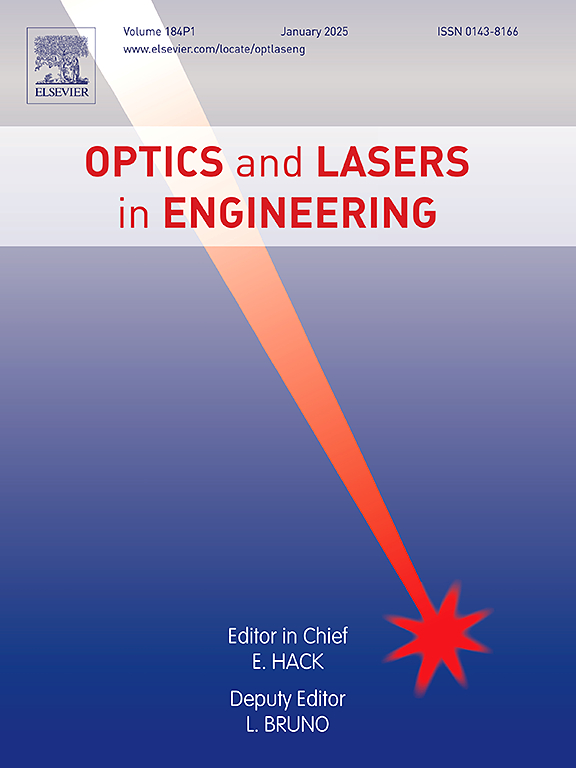Mechanism study and bacteriostatic performance investigation of axial ultrasonic vibration-assisted nanosecond laser microfabrication of pure titanium surfaces
IF 3.5
2区 工程技术
Q2 OPTICS
引用次数: 0
Abstract
With excellent biocompatibility and good corrosion resistance, Titanium and titanium alloys are ideal materials for orthopedic implants. The antimicrobial properties of orthopedic implants are critical in clinical care. Titanium itself does not have antimicrobial properties which can lead to infection problems. Axial ultrasonic vibration-assisted laser processing technology is developed by researchers as a novel means of surface modification. In this paper, a mathematical model of the lap rate of axial ultrasonic vibration-assisted laser ablation pits is developed, and the feasibility of the model is verified by numerical simulations and experiments using pure titanium as the base material. Errors in lap rates ranged from 2.1 % to 22.4 % between theory calculation and experiments results. Surface morphology at five different lap rates was prepared and observed for bacteriostatic surface evaluation. The results showed that the bacteriostatic surface was achieved at a lap ratio of 76.18. A surface with 97.9 % antibacterial activity was prepared based on a new theoretical model of axial ultrasonic vibration-assisted nanosecond laser processing method, which is instructive for improving the antimicrobial activity of orthopedic implants.
轴向超声振动辅助纳秒激光微加工纯钛表面机理及抑菌性能研究
钛及钛合金具有优良的生物相容性和良好的耐腐蚀性,是骨科植入物的理想材料。骨科植入物的抗菌性能在临床护理中至关重要。钛本身不具有抗菌性能,这可能导致感染问题。轴向超声振动辅助激光加工技术是一种新型的表面改性技术。本文建立了轴向超声振动辅助激光烧蚀坑搭接率的数学模型,并以纯钛为基材,通过数值模拟和实验验证了模型的可行性。理论计算与实验结果的误差在2.1% ~ 22.4%之间。制备了五种不同搭接率下的表面形态,并观察了表面抑菌效果。结果表明,该抑菌表面的搭接比为76.18。基于轴向超声振动辅助纳秒激光加工新理论模型制备了抗菌活性为97.9%的表面,对提高骨科植入物的抗菌活性具有指导意义。
本文章由计算机程序翻译,如有差异,请以英文原文为准。
求助全文
约1分钟内获得全文
求助全文
来源期刊

Optics and Lasers in Engineering
工程技术-光学
CiteScore
8.90
自引率
8.70%
发文量
384
审稿时长
42 days
期刊介绍:
Optics and Lasers in Engineering aims at providing an international forum for the interchange of information on the development of optical techniques and laser technology in engineering. Emphasis is placed on contributions targeted at the practical use of methods and devices, the development and enhancement of solutions and new theoretical concepts for experimental methods.
Optics and Lasers in Engineering reflects the main areas in which optical methods are being used and developed for an engineering environment. Manuscripts should offer clear evidence of novelty and significance. Papers focusing on parameter optimization or computational issues are not suitable. Similarly, papers focussed on an application rather than the optical method fall outside the journal''s scope. The scope of the journal is defined to include the following:
-Optical Metrology-
Optical Methods for 3D visualization and virtual engineering-
Optical Techniques for Microsystems-
Imaging, Microscopy and Adaptive Optics-
Computational Imaging-
Laser methods in manufacturing-
Integrated optical and photonic sensors-
Optics and Photonics in Life Science-
Hyperspectral and spectroscopic methods-
Infrared and Terahertz techniques
 求助内容:
求助内容: 应助结果提醒方式:
应助结果提醒方式:


